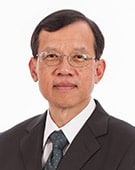An Aerospace Engineer on a Mission to Disrupt Healthcare
Going where no healthcare technology company has gone before.

There’s not a day that goes by at Smartlink Health’s headquarters in Cary, NC that Siu Tong, our CEO and fearless leader isn’t at the office. From sunup to way into the night, he can be spotted walking the halls talking on his cell phone, sitting in a conference room, at his desk heads down on his laptop or even washing dishes in the breakroom. He’s a man on a mission and that mission is clear: To solve the interoperability puzzle that has kept healthcare data locked in an untold number of different EHR systems and thousands of other operational systems for decades now. It’s a mission many have been on in both the private and public healthcare sectors since at least the 80’s and a challenge that has become one of the industry’s biggest sources of consternation and cost. The market is moving to value-based care and providers, payers, and organizations in between are hungry for data that simply doesn’t exist or is inconsistently available in document-based exchanges.
Virtually all industries struggle with data silos locked in disparate IT systems.
So what makes Siu different than any of the other hundreds of healthIT CEOs whose companies offer a data integration solution? Well, for starters, Siu has a Ph.D. in Aeronautical Engineering from Massachusetts Institute of Technology (MIT), which means he’s an aerospace engineer. On the surface, the leap from aerospace engineering to healthcare seems like a pretty big and unlikely one. However, upon closer inspection, it makes complete sense. The reality is the data access issue is not unique to healthcare. Virtually all industries struggle with data silos locked in disparate IT systems. While IHE, ONC, and an array of government contractors and trade associations were starting the interoperability journey in healthcare, Siu was working in parallel to solve the same issue in the aerospace, automotive, and defense industries.
The user interface is an interface so why don’t you use it?
In his role as an engineer at GE, Siu was experiencing much of the same data access pains that the healthcare industry is currently experiencing. At the time, he was tasked with synchronizing over 16,000 different product components in order to optimize and balance the Boeing 777 engine with the efficiency, cost, vibration, comfort, safety, noise, and overall structural integrity of the aircraft. To get the data flowing between the thousands of disparate software applications, he went back to an approach he mastered at MIT as an aeronautical engineering student.
The solution Mr. Tong developed is a combination of artificial intelligence and numerical methods that leveraged the user interface as ‘the interface’ to access data. Since its inception, Siu’s technology has been deployed across more than 500 global companies and used to link over 30,000 software applications without interfaces. In aerospace, it saved $250,000 per engine, a $500 million cost savings, and in the automotive industry, his approach bumped the crash safety ratings from 4 stars to 5 stars on a number of cars you’d be familiar with. Hmm…cost and quality. Sound familiar?
The move to healthcare.
Driven to solve complex problems, Siu has spent the last 10 years in healthcare designing Software-as-a-System (SaaS) solutions that improve referral coordination and enable physicians to easily deploy Medicare’s fee-for-service programs – Annual Wellness Visit, Chronic Care Management, General Behavioral Health, and Transitional Care Management. Despite the formidable healthcare technology Siu’s team had built, they were challenged with acquiring the data necessary to initiate the value-based workflows. Siu retooled his UI-based integration architecture and focused it on the exchange of data with EMRs (Electronic Medical Records). Since then he’s been laser focused on moving beyond interoperability and into what we call data liquidity, which in Smartlink terms means going beyond interoperability and enabling data exchange with systems Meaningful Use unfortunately left behind. Even today, Siu continues to optimize the solution he created more than 25 years ago. This solution, Smartlink Data Connector (SDC) is adding tremendous value across several markets and demonstrating near-immediate results for EMR-LIMS (Lab Information Management Systems) integration, long-running and labor intensive workflows like Prior Authorization and registry integration, and we’re seeing traction in telemedicine, ambulatory check-in, and many others. If the eye can see data in the user interface… SDC can access that data. If a human interacting with a healthcare technology can accomplish a workflow, SDC can automate it. The User Interface is the most established, the most secure, the most highly tested, and the most audited interface there is. Use it.
Stay tuned for more info on ways Smartlink SDC is helping Accountable Care Organizations (ACOs), Clinically Integrated Networks (CINs), Health Information Exchanges (HIEs), lab companies, billing companies, health systems, and population health vendors access data faster, more affordably, and at a fraction of the cost. Oh, and if you do have the chance to meet Siu Tong, you’ll find him incredibly humble and hospitable. He’s beloved by every one of his hand-picked team members and we’re proud to be part of his mission!
Mark Dunnagan VP Health Informatics
Table of Contents

